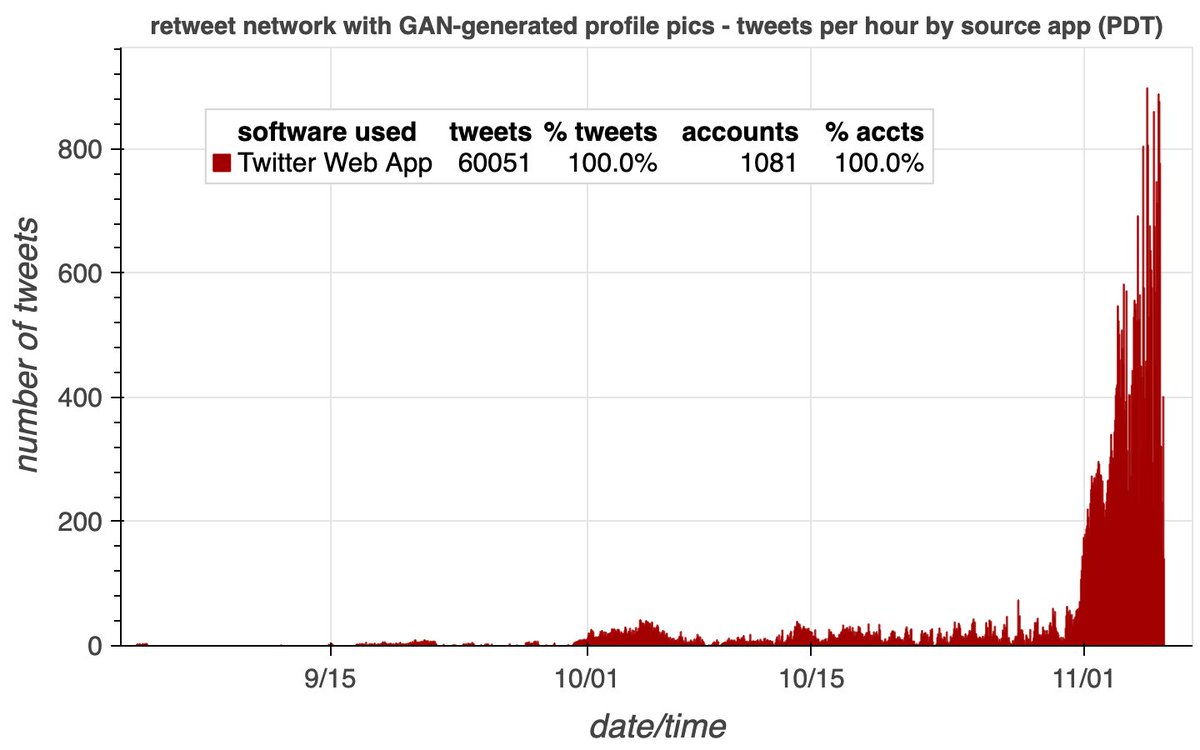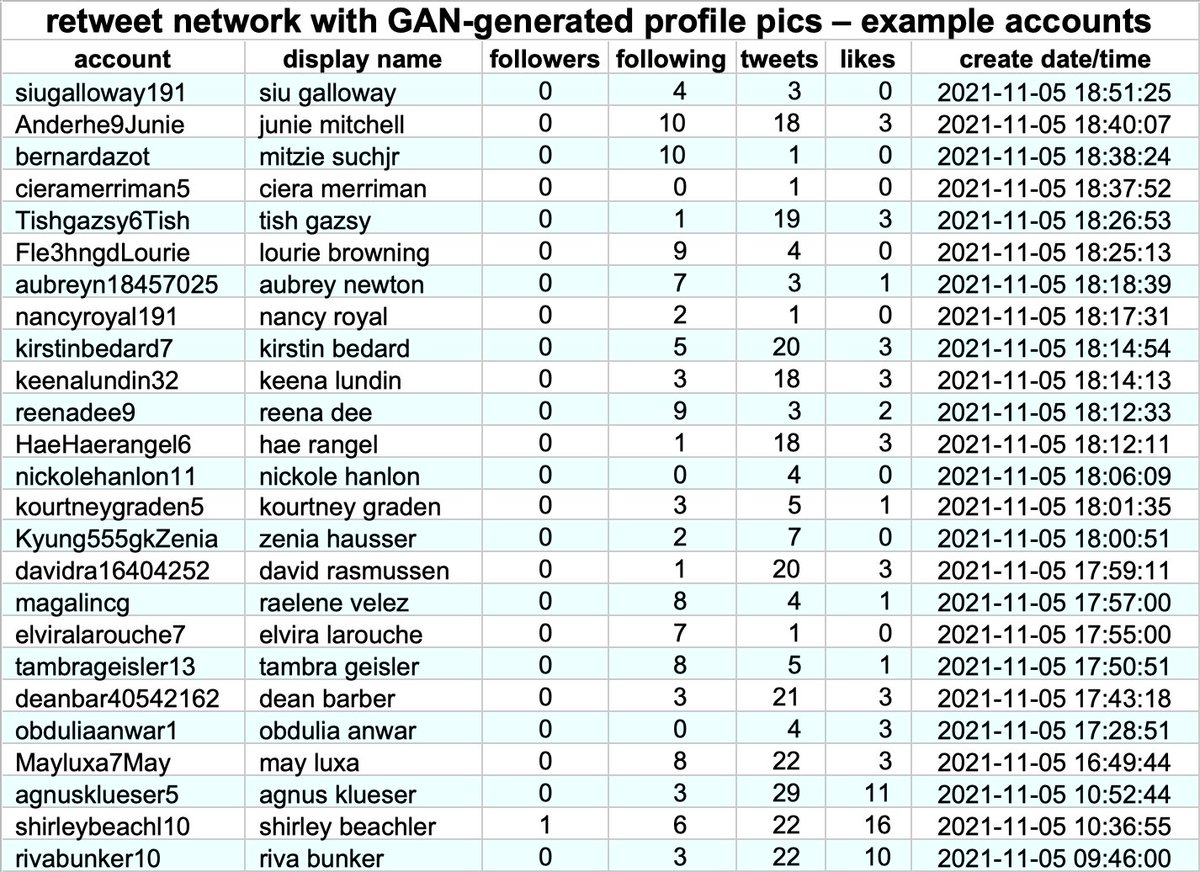How did this tweet from #Texit supporter and lieutenant governor candidate @TheTexianDM get more retweets than likes, mostly from accounts with GAN-generated profile pics?
(GAN = "generative adversial network", the AI technique used by thispersondoesnotexist.com)
cc: @ZellaQuixote
(GAN = "generative adversial network", the AI technique used by thispersondoesnotexist.com)
cc: @ZellaQuixote

Answer: @TheTexianDM's tweet was retweeted by an botnet consisting of (at least) 1081 accounts created in September, October, or November 2021. All 1081 accounts tweet exclusively via the Twitter Web app, and almost all of their tweets are retweets. #astroturf 







The accounts in this network mostly retweet cryptocurrency/blockchain/NFT content, but there are exceptions - gaming accounts, musicians, and political accounts turn up as well. 

All 1081 accounts in this network use GAN-generate face pics as their profile pics, similar to those produced by thispersondoesnotexist.com. 



GAN-generated face pics (at least so far) have the telltale trait that the major facial features (particularly the eyes) are always rendered in the same position on the image. This becomes obvious when one blends the 1081 images used by the botnet together:
Other potential indicators of GAN-generated face pics include nonsensical clothing and hats made of abstract colorful blobs rather than any real material. GAN-generated "sports caps" will often have random colorful debris where the team logo would be on a real hat. 



GAN-generated face pics also sometimes have trippy backgrounds that often superficially resemble buildings or outdoor scenes but that turns out to be composed of abstract shapes and blobs of varying colors when one looks more closely. 

Additionally, vestigial heads near the edges of the image (sometimes referred to as "side demons") and malformed glasses or goggles that sometimes blend into the face or are unrealistically asymmetrical are also fingerprints of GAN-generated pics. 



Permanent IDs for the 1081 accounts in this network, in case anyone wants them. (A few are already suspended.)
pastebin.com/5TY22SC8
pastebin.com/5TY22SC8
More information on GAN-generated pics and their use on (mostly) Twitter in this compendium o' threads:
https://twitter.com/conspirator0/status/1322704400226394112
• • •
Missing some Tweet in this thread? You can try to
force a refresh































